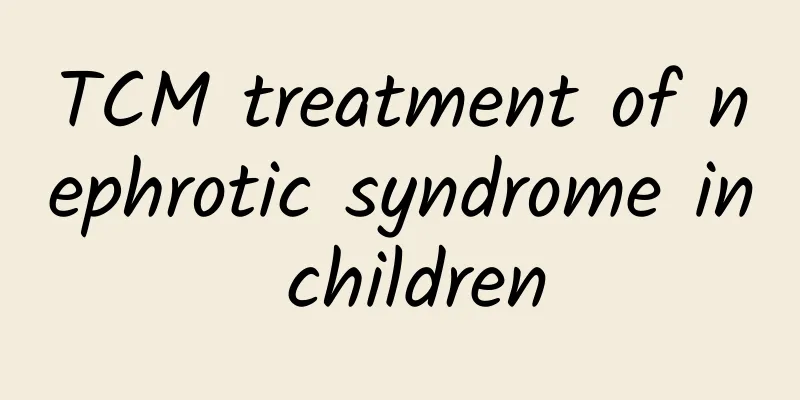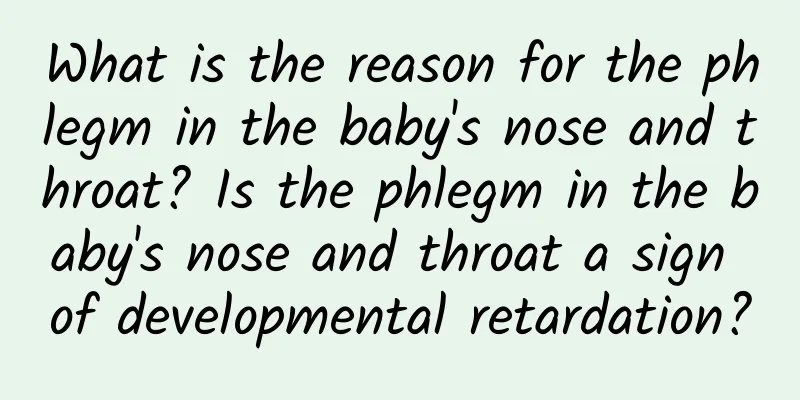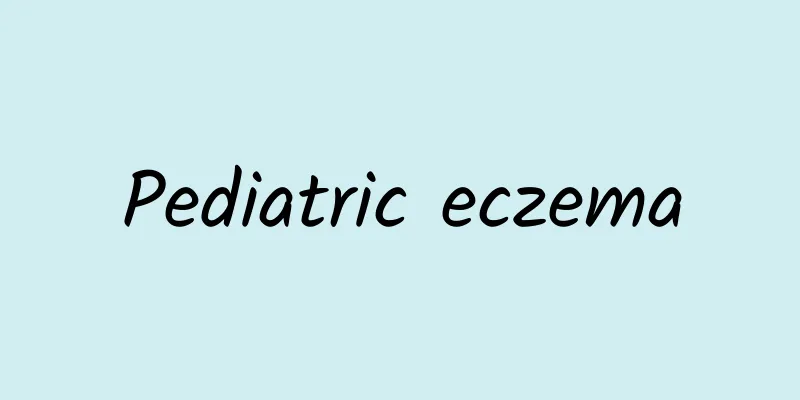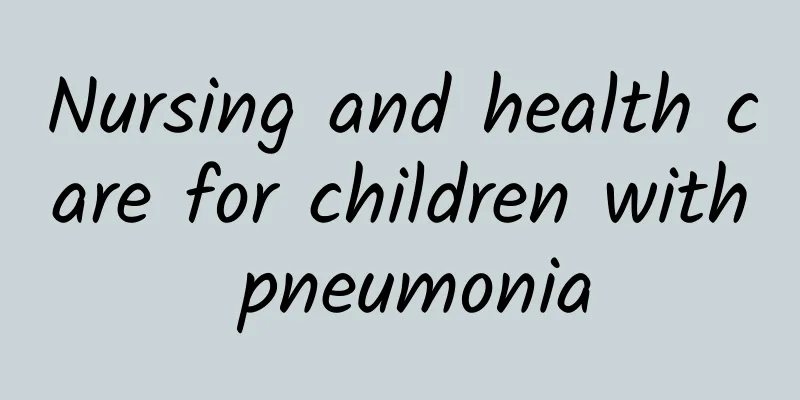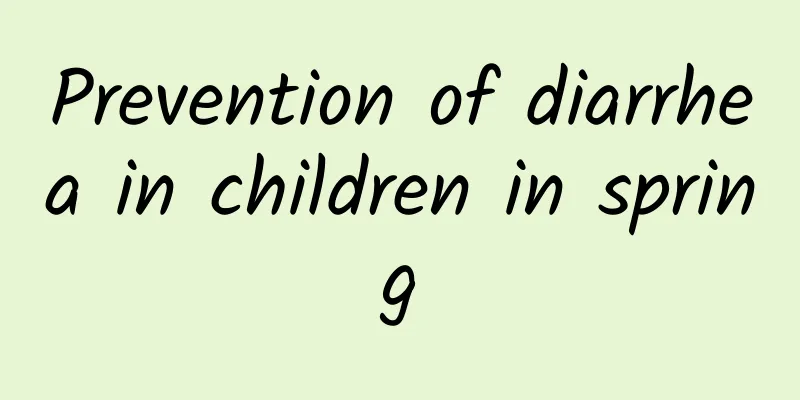What are the symptoms and manifestations of hand, foot and mouth disease in children? When is the peak period of hand, foot and mouth disease?
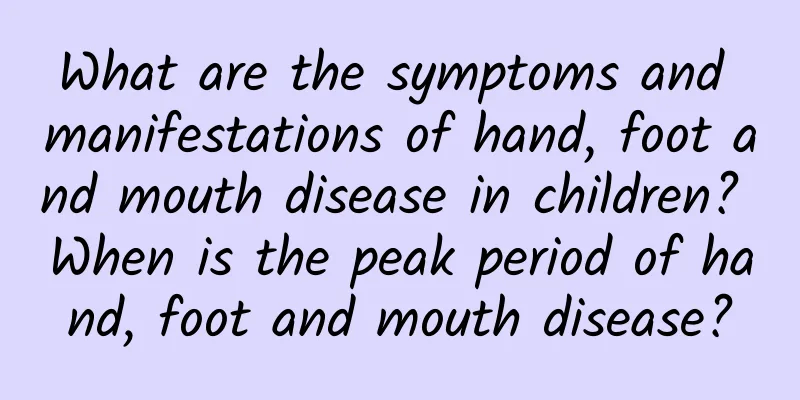
|
Hand, foot and mouth disease is a common disease that occurs frequently in infants and young children under the age of 5. Summer and autumn are the peak seasons for the disease, so parents should pay more attention. So, how should children undergo physical examinations if they have hand, foot and mouth disease? If children have hand, foot and mouth disease, they should go to the hospital for treatment as soon as possible. What is hand, foot and mouth disease in children? What are the physical examination items for hand, foot and mouth disease in children? Let's take a look below. What are the common symptoms of hand, foot and mouth disease? The incubation period of hand, foot and mouth disease is generally about 2-10 days. The external manifestations in the initial stage are similar to common cold and fever, but as the disease progresses, some specific characteristics will appear. Common symptoms As the name suggests, the most obvious symptoms of hand, foot and mouth disease appear on the hands, feet and mouth. Herpes similar in size and color to rice grains will appear in these three affected areas. Children can feel pain, and some children may also develop blisters on the buttocks or anus. The child may also have a low-grade fever (around 38°C) and a rash, but these symptoms are usually not serious and will heal naturally within 1-2 weeks without any sequelae. A persistent low-grade fever may cause the baby to have a loss of appetite, dizziness, headaches, and occasional coughing and runny nose. Symptoms of severe cases A very small number of children with hand, foot and mouth disease will develop complications of the respiratory, nervous or circulatory systems. Among the more serious symptoms are meningitis, encephalomyelitis, myocarditis, pulmonary edema, circulatory failure, etc. 1. Symptoms of respiratory problems are very obvious. The baby's lung function deteriorates, breathing becomes rapid or difficult, and symptoms similar to suffocation may occur. In severe cases, the baby may foam at the mouth or spit blood. 2. Babies whose nervous systems are affected will become distracted, suffer from nausea, vomiting, drowsiness, etc., and have some uncontrollable limb reactions, such as convulsions and weakness in the limbs, etc. In severe cases, they may suffer from cerebral edema, brain hernia, etc. 3. Although the abnormal manifestations of the circulatory system are not obvious, they should be given enough attention. If the baby's limbs begin to become cold, the face becomes pale, and the heartbeat becomes disordered, the baby should be sent to the hospital for treatment in time. Although severe cases of hand, foot and mouth disease rarely occur, we have to prevent it since there is such a possibility. If the baby is infected with the virus, mothers must not relax their vigilance and observe the child's condition at all times. If there is any abnormality, send the child to the hospital for treatment in time. Laboratory tests 1. Peripheral blood leukocytes In most cases, the total white blood cell count and neutrophil count are normal. In severe cases, the white blood cell count may be significantly increased. 2. Blood biochemical examination Some cases may have mild elevations in ALT, AST, and CK-MB, and severe cases may have elevated blood sugar. 3. Etiological examination Specific EV71 nucleic acid is positive or EV71 virus is isolated. 4. Serological examination The specific EV71 antibody test is positive. The complement test is the most sensitive, and a positive result can be obtained 10 to 20 days after the onset of the disease. 5. Cerebrospinal fluid examination The appearance is clear, the pressure is increased, the leukocytosis is increased (in critical cases, the multinuclear cells may be more than the monocytes), the protein is normal or slightly increased, and the sugar and chloride are normal. When there are complications of the central nervous system, the cerebrospinal fluid cell count may increase and the protein may rise. 6. Confirmation On the basis of clinical diagnosis, a positive EV71 nucleic acid test, isolated EV71 virus or positive EV71IgM antibody test, or a more than 4-fold increase in EV71IgG antibody or a change from negative to positive can confirm the diagnosis. Physical examination 1. Chest X-ray It may manifest as increased texture in both lungs, grid-like, dot-like, and large-scale shadows. In some cases, it is more unilateral and rapidly progresses to large bilateral shadows. 2. Electrocardiogram No specific changes. Sinus tachycardia or bradycardia and ST-T changes may be seen. 3. Magnetic resonance The main damage is to the brainstem and gray matter of the spinal cord. 4. Electroencephalogram Some cases may present as diffuse slow waves, and a few may present as spike (point) slow waves. |
>>: What are the major hazards of tics? What are the symptoms and manifestations of tics?
Recommend
What is the reason for cold body and cold limbs
The phrase "cold body and cold limbs" s...
What causes overactive bladder?
The main causes of hyperactive bladder include th...
Recipes for treating mumps
In recent years, mumps has gradually become a mul...
How is Kawasaki disease contracted?
Kawasaki disease is usually caused by genetic fac...
How to treat a 4.5 month old baby with a cough and phlegm How to treat a 4.5 month old baby with a cough and phlegm
If a 4.5-month-old baby has a cough and phlegm, y...
Dietary treatment for infant cough Dietary treatment for infant cough
Coughing is a self-defense reflex action of human...
What to do with neonatal jaundice
What to do with neonatal jaundice? Jaundice is re...
What are the characteristics of childhood kidney disease?
Kidney disease not only occurs in adults, but als...
What should I do if I am deficient in trehalase? What tests are needed for trehalase deficiency?
Infants may have sucrase and isomaltase deficienc...
What is the cause of tonsillitis in children? I recommend two treatment methods for tonsillitis in children.
Tonsillitis is a common disease in children and o...
Physical examination method for poliomyelitis
Polio is a common childhood disease. Most patient...
What are the dangers of ADHD in children
Some children are always restless. Parents must n...
Symptoms of malnutrition
Nowadays, people's pace of life has accelerat...
What tests are needed for neonatal pathological jaundice?
What tests are needed for neonatal pathological j...
Is your baby suffering from indigestion? Here are some dietary treatments to help your baby digest better.
Usually indigestion causes a burning sensation. A...

